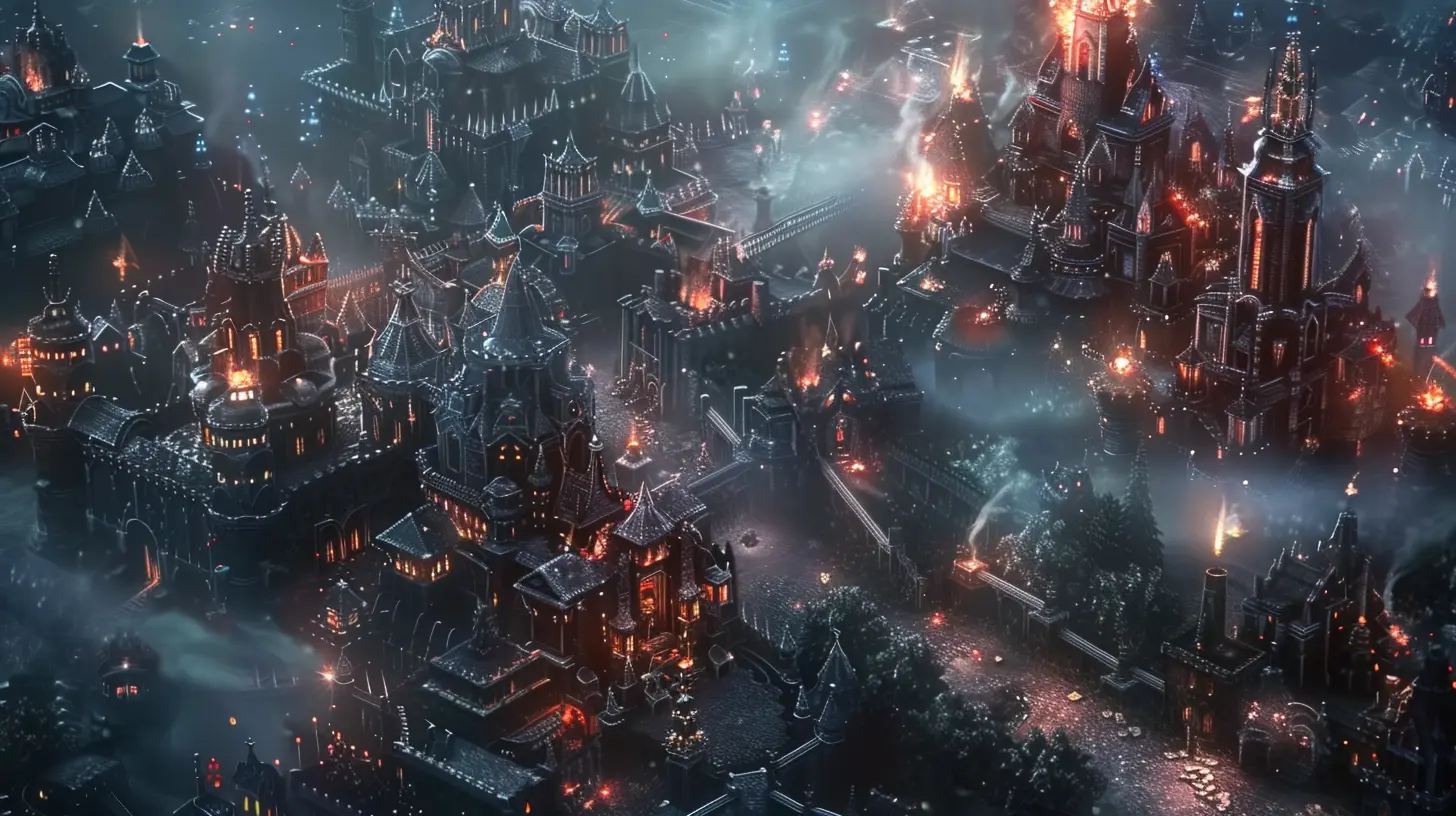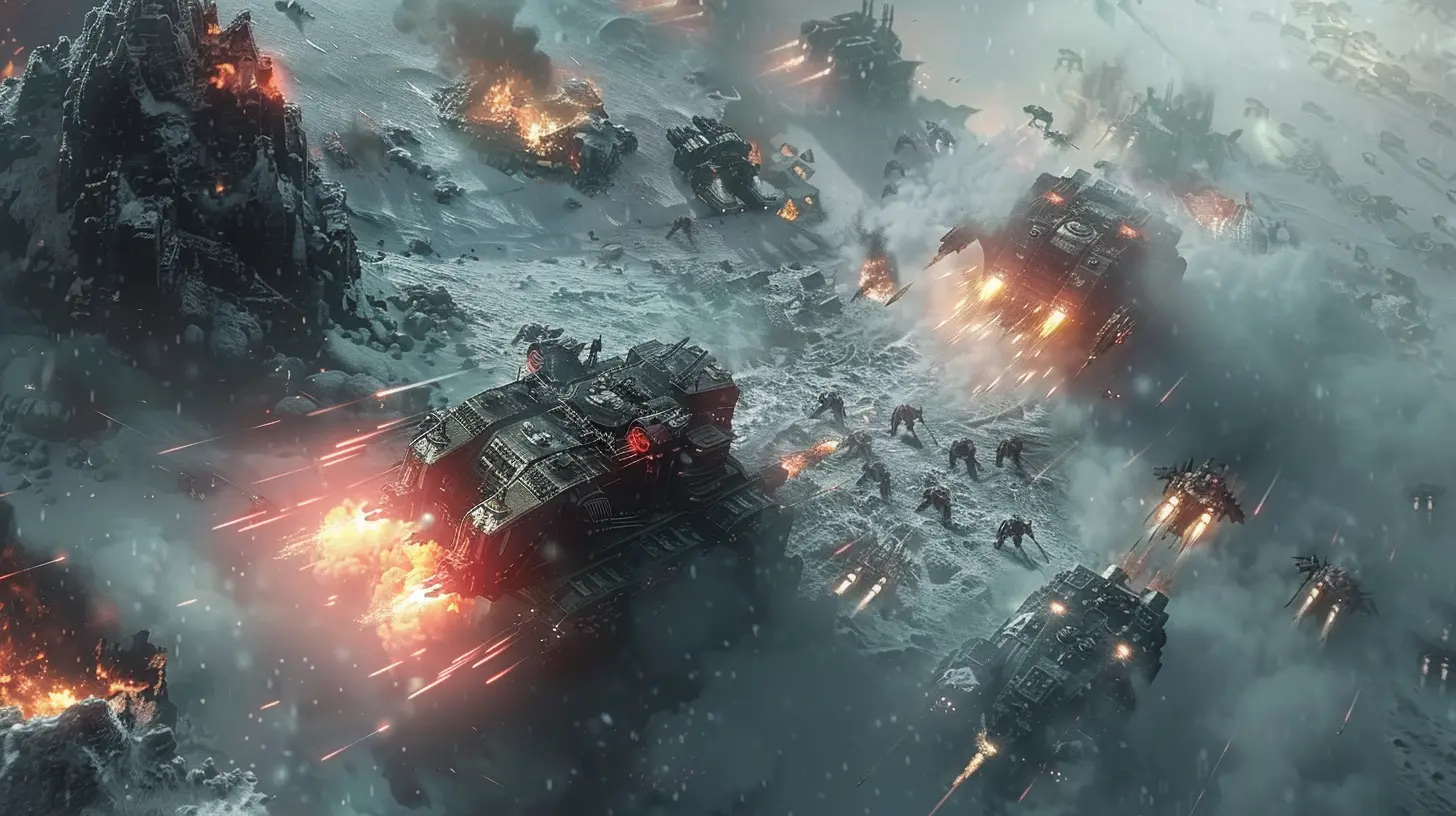The Role of Fog of War in Shaping RTS Strategies
7 November 2025
Real-Time Strategy (RTS) games have long captured the imaginations of players, blending tactical thinking, quick decision-making, and engaging gameplay mechanics. One key feature that stands out in these games, often overlooked yet undeniably critical, is the "fog of war." It’s not just a design element; it’s a game-changer—literally. The fog of war plays a fundamental role in shaping strategies, influencing gameplay, and ultimately determining who emerges victorious.
But what exactly is the fog of war, and how does it impact your decision-making in RTS games? Let’s dissect this feature and examine how it forces players to think on their toes, adapt, and sometimes gamble big.

What is the Fog of War?
If you’ve ever played an RTS game like StarCraft, Warcraft, or even Age of Empires, you’ve probably encountered the fog of war. It’s that shadowy, darkened area of the map where you can’t see what’s going on until you send a unit to scout it out. Sure, you might have a vague idea of the terrain thanks to the mini-map, but the details—enemy units, buildings, and movements—are hidden.In essence, the fog of war is the visual representation of limited information. It simulates the real-life uncertainty that military commanders face. You’re not all-knowing, and you have to make decisions based on incomplete data. Frustrating? Maybe. But it’s exactly this uncertainty that makes RTS games so thrilling and mentally engaging.
Why Does the Fog of War Exist?
Alright, let’s address the elephant in the room. Why do developers even include the fog of war? Wouldn’t it be easier (and less stressful) if we could just see the entire map?The answer is simple: balance and challenge. The fog of war forces players to get creative. It levels the playing field between opponents by introducing an element of mystery. Without it, the game would devolve into a mechanical race of who can micro-manage their units faster. The fog transforms RTS games into a battle of wits and courage, where every decision is a calculated risk.
Think about it. Without fog of war, you’d always know where your opponent is, what they’re building, and when they're planning an attack. That sounds… well, boring. The fog injects unpredictability into the game, making success feel hard-earned and satisfying.
Scouting: The Countermeasure to the Fog
If the fog of war acts as the barrier, scouting is the key to breaking through it. Scouting is your way of gathering information about the map, the enemy, and potential resources. It’s like shining a flashlight in a pitch-black room—you may not be able to see everything, but you’ll know just enough to make decisions.Here’s why scouting matters:
- Resource Management: You’ll want to uncover new resource nodes quickly before your opponent does. Scouting helps you prioritize areas to secure.
- Enemy Intel: Spotting an early threat lets you adjust your strategy. Maybe your opponent is rushing for an early-game attack, or perhaps they’re turtling (building heavy defenses). Scouting gives you the clues.
- Adaptation: Once you’ve got an idea of what your opponent is doing, you can pivot. It’s a chance to outwit them with smart counter-strategies.
Pro tip? Don’t just scout once and forget about it. The game changes constantly, and keeping tabs on your enemy keeps you one step ahead. 
The Mind Games Behind the Fog of War
The fog of war isn’t just about hiding stuff—it’s about creating a psychological battlefield. This is where things get interesting.When you can’t see everything, you’re forced to make assumptions. You might think, “Are they massing an army in the fog, or am I just paranoid?” That’s the beauty of it. The fog of war plays with your head, encouraging bluffing and misdirection.
For example, in StarCraft, some players might purposely leave a unit or two exposed in a seemingly random location. The goal? To trick the enemy into believing an attack is coming from that direction. Meanwhile, the real army is preparing an ambush elsewhere. It’s a classic bait-and-switch tactic that only works because of the fog of war.
It’s not just about fooling the opponent, though. The fog also forces you to manage your own fears and biases. Are you overcommitting to defenses because you think an attack is headed your way? Or are you being too aggressive because you’ve underestimated your opponent? These mind games are what separate casual players from the pros.
Risk vs. Reward: Navigating the Unknown
The fog of war forces you to weigh risks against potential rewards. Should you send a scout unit into danger, knowing they might not survive, but hoping they uncover vital info? Or do you play it safe and stay in the dark?Let’s break this down:
- Risk: Sending a scout to an unexplored area could alert the enemy to your position or lead to a trap. Worse, if you lose the unit, you’re wasting a resource.
- Reward: Uncovering an enemy base or weakness early can turn the tide of the entire game. Plus, having a clearer idea of the map layout helps you plan better.
It’s like gambling in a casino—you’re betting with your units. Play cautiously, and you might not lose much, but you’ll also miss out on big opportunities. Play recklessly, and you could hit the jackpot… or lose everything. Finding that sweet spot is what makes RTS games so addictive.
Strategies Built Around the Fog of War
Now let’s get to the fun part—crafting strategies that embrace the fog of war. Here are a few tried-and-true tactics:1. Constant Scouting
This one’s obvious but worth repeating. Keep your scouts moving throughout the game. Not only does it help you track enemy movements, but it also keeps your opponent guessing about your own plans.2. Map Control
The more of the map you control, the smaller the fog of war becomes. Build outposts or station units strategically to expand your visibility. The more you see, the fewer surprises your opponent can throw at you.3. Ambush Tactics
Use the fog of war to hide your movements. Sneak a group of units into an unguarded part of the enemy’s base or lie in wait near a high-traffic area. The fog makes it easy for you to vanish like a ninja before striking.4. Deception
As mentioned earlier, misdirection is a powerful tool. Let your opponent think they know what you’re doing while preparing to do the opposite. Place dummy structures, leave bait units, or even fake an attack.5. Turtling with Scout Pressure
If you’re a defensive player, your goal is to survive long enough to build an unstoppable force. But don’t go dark—keep your opponent uncomfortable with periodic scouting. This keeps them guessing and wastes their resources on unnecessary defenses.The Fog of War's Legacy in RTS Games
The fog of war has been a staple of RTS games for decades, and for good reason. While some modern games experiment with tweaking or removing it, its core concept remains deeply ingrained in the RTS experience. It’s not just a technical feature—it’s part of the genre’s identity.In recent years, we’ve even seen fog-of-war-inspired mechanics bleed into other genres, from MOBAs like League of Legends to turn-based strategy games like Civilization. Why? Because uncertainty isn’t just nerve-wracking—it’s exciting.
The Final Word
At the end of the day, the fog of war isn’t just a frustrating barrier—it’s a test of strategy, adaptability, and nerves. It levels the playing field, creating an environment where cleverness and preparation often outweigh brute force. It’s not just about what you see but what you don’t see—and how you plan for that uncertainty.So, the next time you’re knee-deep in an RTS match, don’t curse the fog of war for keeping you in the dark. Embrace it. Use it. Master it. After all, it’s not obstacles that define great players—it’s how they overcome them.
all images in this post were generated using AI tools
Category:
Real Time StrategyAuthor:

Pascal Jennings
Discussion
rate this article
1 comments
Angela Pope
“Fog of War: the ultimate plot twist that keeps strategy gamers on their toes!”
November 11, 2025 at 4:39 AM

Pascal Jennings
Absolutely! Fog of war adds layers of uncertainty, prompting players to adapt and rethink their strategies, enhancing the depth and excitement of RTS gameplay.


